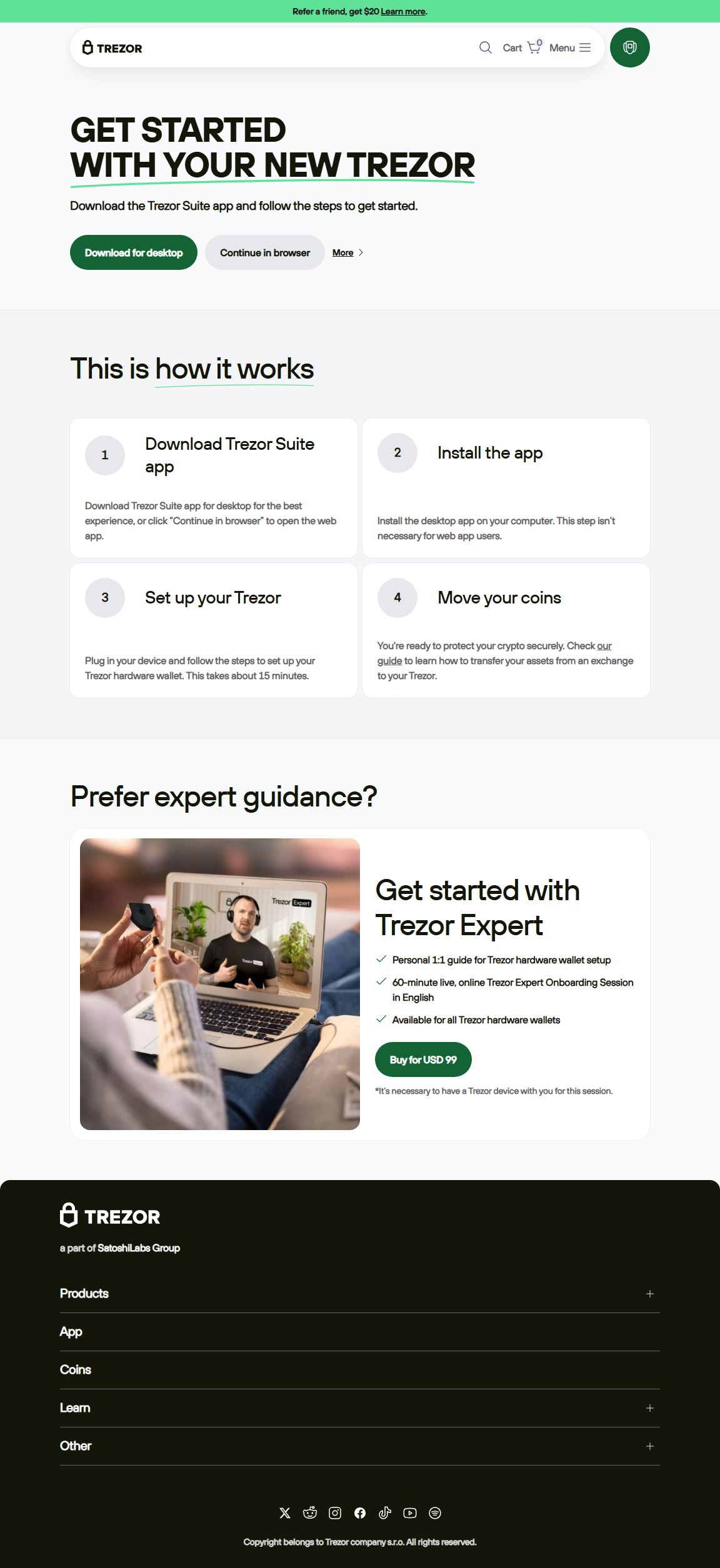Mastering Trezor Login: Your Gateway to Secure Crypto Access
A comprehensive guide for new and intermediate users on how to log in safely to your Trezor wallet, understand authentication methods, and protect your digital assets.
What Is Trezor Login and Why Is It Important?
When we talk about Trezor Login, it refers to the process of accessing your cryptocurrency wallet through the Trezor Suite software or compatible web wallets that interface with your Trezor hardware device. Unlike traditional passwords, Trezor’s login is a combination of physical device verification and cryptographic authentication, ensuring your private keys never leave the device.
This two-factor login process guarantees enhanced security, making unauthorized access nearly impossible. Understanding how to log in properly and safely is the first step to managing your crypto portfolio with confidence.
Key Features of Trezor Login
- Physical device connection required — ensures only you with the hardware can access funds.
- PIN protection on your device adds an extra security layer during login.
- Optional passphrase integration for creating hidden wallets accessible only with your input.
- Authentication via cryptographic signature rather than passwords or cloud-based logins.
- Login takes place locally—your private keys never leave your Trezor device, preventing exposure online.
Step-by-Step: How to Log in to Your Trezor Wallet
- Connect your Trezor device to your computer or smartphone via USB or compatible connection.
- Open the Trezor Suite app on your device or visit the official Trezor web interface via
wallet.trezor.io. - Enter your PIN on the physical Trezor device. This step protects against unauthorized access if your device is lost or stolen.
- If enabled, enter your passphrase on the Trezor device or through the interface. Passphrases create hidden wallets adding an extra layer of privacy.
- Wait for the device to authenticate — your private keys remain secure inside the hardware.
- Access your wallet dashboard on the app or web interface, where you can view balances, send, receive, and manage your assets safely.
Login Security Best Practices
- Always connect via official software or websites (Trezor Suite or
wallet.trezor.io) to avoid phishing. - Never share your PIN or passphrase with anyone. Trezor never asks for these details via email or support calls.
- Use a complex passphrase if you choose to enable it — this creates a separate “hidden” wallet with enhanced privacy.
- Keep your recovery seed offline and never enter it into any website or app.
- Regularly update your Trezor firmware to protect against vulnerabilities.
Common Issues During Trezor Login and How to Fix Them
- Device not recognized: Try reconnecting your device or use a different USB cable/port.
- PIN attempts blocked: Wait for the cooldown period or reset device if necessary (but only if you have your recovery seed).
- Passphrase forgotten: Without your passphrase, that hidden wallet is inaccessible—recovery isn’t possible.
- Firmware outdated: Use Trezor Suite to update your firmware to the latest version.
Quick Tips for Seamless Trezor Login
- Keep your device charged and clean USB ports to avoid connection issues.
- Use a dedicated computer or smartphone free from malware for logging in.
- Back up your recovery seed in multiple secure locations before first login.
- Enable two-factor authentication on linked accounts where possible.
Glossary of Related Terms
- Hardware Wallet
- A physical device that securely stores your cryptocurrency private keys offline.
- PIN
- A personal identification number set on your Trezor device to prevent unauthorized access.
- Passphrase
- An optional additional password added to your seed to create hidden wallets with extra privacy.
- Recovery Seed
- A 12-24 word phrase generated during wallet setup that allows you to recover your funds if the device is lost or damaged.
- Firmware
- The embedded software running on your Trezor device which manages security and functionality.
